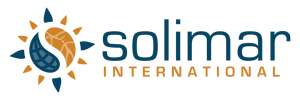For 8 weeks from October 8 – November 30, Solimar designed and implemented the Namibia Tourism Board‘s “Share My Namibia” campaign. This cross-platform effort used engaging stories, photos, and videos to highlight Namibia iconic attractions from a personal, local perspective.
Namibia is a a great destination to market. The amazing landscapes and incredible wildlife almost sell themselves. What we wanted to do with Share My Namibia was to breathe new life into how potential travelers understand Namibia’s well known and (a little-less-well-known) attractions.
Share My Namibia had three main goals:
- Raise awareness of Namibia as an exciting travel destination full of diverse cultural experiences
- Significantly increase the size of Namibia Tourism Board’s online communities among high-value audiences
- Use incentives and great content to move the global audience through the “sales funnel” towards travel planning.
At the core of Share My Namibia were 12 great stories from local Namibians about where they’re from… places that also happened to be incredible tourism destinations. Each destination was given a landing page full of rich images that were meant to inspire.
Share My Namibia Facebook App
To drive traffic to the site, we designed a Facebook app that used the National Geographic GeoStories platform to highlight the 12 destinations and provide a gateway to landing pages on the NTB website featuring additional information. After viewing the content on the App, users were invited to enter a sweepstakes by creating their “dream” itinerary of 3 of the iconic destinations they’d like to visit.
The sweepstakes was “fangated” – meaning the users had to “like” the Namibia: Endless Horizons facebook page. This was key to growing the Facebook community size: use the sweepstakes as an incentive to create a larger audience for social media content. We also collected the users’ email address at the time of entry so we could provide leverage future email marketing that would bring the user back to the website.
Travel Industry Partners
To maximize the reach of the Share My Namibia campaign, we syndicated a customized version of the Facebook app to 62 companies and organizations that maintain strong online communities, such as tour operators, non-profit organizations, affinity travel groups, media organizations, and travel gear/outfitters. Each app included a banner unique to that organization highlighting their Namibia itineraries or activities.
It was a win-win situation: the NTB received an additional outreach of over 14 million and the partners had the opportunity to co-market and co-brand with the Namibia Tourism Board while providing high-quality content to their online audiences.
Each week of the campaign an e-blast was delivered to participating partners with promotional Namibia content that can be easily adapted for their Facebook pages, blogs and newsletters – further engaging their partners’ online communities, keeping Namibia “top of mind” and increasing their exposure to the Share My Namibia campaign content.
The Sales Funnel
Share My Namibia campaign showcased Solimar’s Marketing with a Purpose and full integration with the HubSpot software’s call-to-action and lead nurturing functionalities.
The great content and incentives developed for the campaign served as top-of-the-funnel awareness building activities. Each page view was CTA-rich in order to provide the extra “one more step” designed to drive the user down the funnel closer to booking a Namibia holiday. Each activity completed and call-to-action clicked was added to a significant list of potential leads.
A total of 1893 high value leads were generated through the Share My Namibia campaign.
Unique referral codes were used to track sweepstakes entries generated from Facebook advertising as well as from the partner referral pages. Each partner received a list of sweepstakes entries that originated from their app. Other leads generated were passed to Namibia Travel Specialists for follow-up.
Entering the sweepstakes triggered an automatically generated email to the user that included additional calls-to-actionto drive them back to the website or online community for further engagement. The open rate for these emails was 39% and click through rate was 6% – higher than industry standards
These contacts remain in the NTB’s database and will continue to receive ongoing engagement. As they return to the site, we’ll be able to gather more specific intelligence about their travel desires and can continue to provide them with continually more specific, targeted messaging around their interests.
Destination Marketing
As more travelers discover about destinations through online sources, new tactics to reach them are essential. The Namibia Tourism Board has eagerly incorporated innovative social media marketing into their arsenal of successful traditional promotional activities. These tactics have allowed Namibia to generate additional awareness among important target markets that would not have otherwise been reached through other means.

